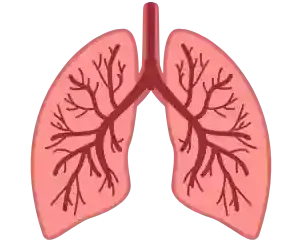Assess your lung health instantly with our reliable online Runner Lung Test. Simple, quick, and designed for optimal performance insights. Try now!
Disclaimer: Do not use this test if you have breathing problems such as asthma and the flu. Also, if you drink alcohol or smoke in everyday life, please consult a medical professional.
Runner Lung Test
Test your lungs with this online inspection tool
Hold your breath to measure your lung capacity

Leaderboard
| # | Time (s) |
|---|---|
| 1 | 0.0 |
| 2 | 0.0 |
| 3 | 0.0 |
| 4 | 0.0 |
1. What is the Runner Lung Test?
The Runner Lung Test is a non-medical assessment designed to help runners evaluate their breathing capacity and endurance. It focuses on understanding how well your lungs support your performance during physical activities, specifically running. This test is typically performed at home or in a casual environment without requiring specialized equipment.
2. Why is lung capacity important for runners?
Lung capacity plays a vital role in delivering oxygen to your muscles while running. Better lung capacity allows for improved endurance, reduced fatigue, and enhanced performance. By understanding your lung function, you can tailor your training to improve breathing techniques and stamina.
3. How can I prepare for the Runner Lung Test?
To prepare for the Runner Lung Test, ensure you are in a comfortable and well-ventilated space. Avoid eating a heavy meal or consuming caffeine before the test, as these may affect your results. It’s also a good idea to perform light warm-up exercises to get your body ready.
4. Do I need any special equipment for the Runner Lung Test?
No special equipment is required for the Runner Lung Test. You may need a stopwatch, a piece of paper to note your observations, and a quiet space where you can focus without distractions.
5. Can the Runner Lung Test improve my performance?
While the test itself doesn’t directly improve performance, it provides insights into your breathing efficiency and endurance. By identifying areas for improvement, you can incorporate specific breathing exercises and training techniques to enhance your overall running performance.
6. Is the Runner Lung Test suitable for beginners?
Yes, the Runner Lung Test is suitable for runners of all levels, including beginners. It’s a simple and effective way to gauge your current breathing capacity and establish a baseline for future improvement.
7. How often should I take the Runner Lung Test?
You can take the test every few weeks or once a month to track progress. Regular testing allows you to measure improvements in your lung capacity and make adjustments to your training regimen accordingly.
8. Are there any risks associated with the Runner Lung Test?
The Runner Lung Test is generally safe and low-risk for healthy individuals. However, if you feel discomfort or shortness of breath during the test, stop immediately and rest.
9. Can children or older adults take the Runner Lung Test?
Yes, the Runner Lung Test is versatile and can be adapted for different age groups. However, it’s essential to adjust the test’s intensity to suit individual capabilities.
10. What can I do to improve my lung capacity after the test?
After taking the Runner Lung Test, you can improve your lung capacity through consistent aerobic exercise, practicing diaphragmatic breathing, and incorporating techniques such as interval training. Staying hydrated and maintaining a balanced diet also support lung health.
11. How is the Runner Lung Test different from professional medical tests?
The Runner Lung Test is an informal, self-administered evaluation. Unlike professional medical tests, it does not diagnose or treat lung conditions. It’s designed for informational purposes to help runners optimize their training.
12. Can I use the results of the Runner Lung Test to modify my running routine?
Yes, the insights gained from the test can guide you in making informed adjustments to your running routine. For instance, if you notice difficulties in maintaining steady breathing, you might focus on improving your aerobic fitness or integrating breathing exercises into your training.
13. Does the Runner Lung Test require a specific time of day?
No, you can take the Runner Lung Test at any time of day. However, it’s best to perform the test when you’re feeling well-rested and not immediately after a meal or intense activity.
14. Are there any apps or tools to assist with the Runner Lung Test?
Yes, several fitness apps can help track your breathing patterns and lung capacity. Some apps include timers and reminders for breathing exercises, which complement the Runner Lung Test.
15. How can I track my progress using the Runner Lung Test?
Keep a journal or use a fitness app to record your results each time you take the test. Note improvements in breathing duration, ease, and control, as these indicate progress in your lung capacity.
